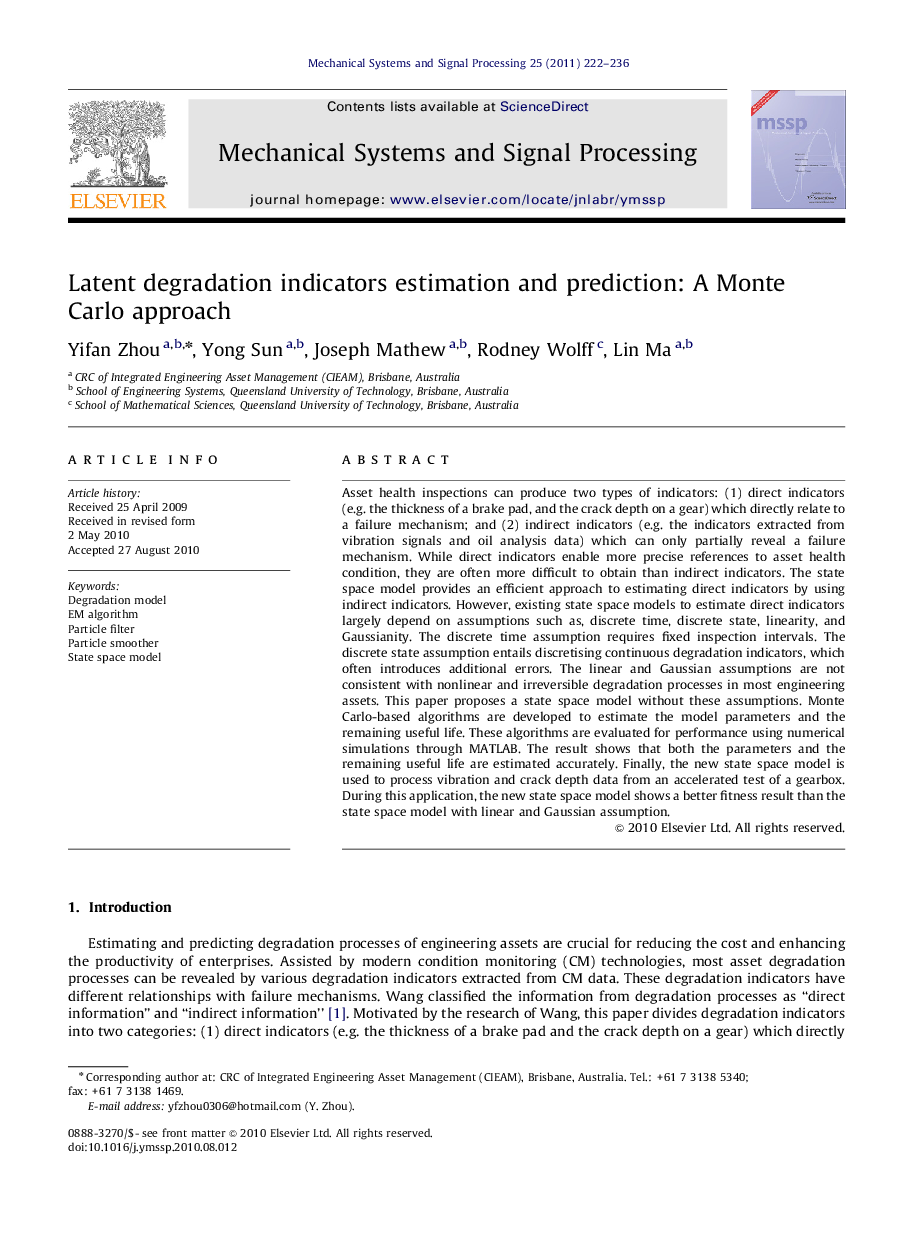| کد مقاله | کد نشریه | سال انتشار | مقاله انگلیسی | نسخه تمام متن |
|---|---|---|---|---|
| 561557 | 875313 | 2011 | 15 صفحه PDF | دانلود رایگان |

Asset health inspections can produce two types of indicators: (1) direct indicators (e.g. the thickness of a brake pad, and the crack depth on a gear) which directly relate to a failure mechanism; and (2) indirect indicators (e.g. the indicators extracted from vibration signals and oil analysis data) which can only partially reveal a failure mechanism. While direct indicators enable more precise references to asset health condition, they are often more difficult to obtain than indirect indicators. The state space model provides an efficient approach to estimating direct indicators by using indirect indicators. However, existing state space models to estimate direct indicators largely depend on assumptions such as, discrete time, discrete state, linearity, and Gaussianity. The discrete time assumption requires fixed inspection intervals. The discrete state assumption entails discretising continuous degradation indicators, which often introduces additional errors. The linear and Gaussian assumptions are not consistent with nonlinear and irreversible degradation processes in most engineering assets. This paper proposes a state space model without these assumptions. Monte Carlo-based algorithms are developed to estimate the model parameters and the remaining useful life. These algorithms are evaluated for performance using numerical simulations through MATLAB. The result shows that both the parameters and the remaining useful life are estimated accurately. Finally, the new state space model is used to process vibration and crack depth data from an accelerated test of a gearbox. During this application, the new state space model shows a better fitness result than the state space model with linear and Gaussian assumption.
Journal: Mechanical Systems and Signal Processing - Volume 25, Issue 1, January 2011, Pages 222–236